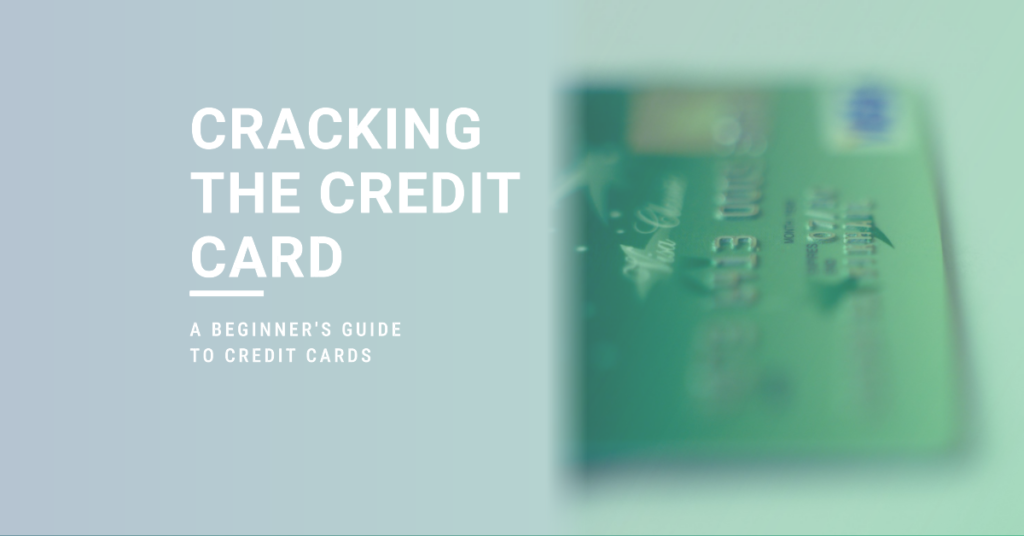Understanding Credit Cards: Credit Cards Definition

In the realm of personal finance, few tools are as ubiquitous and influential as credit cards. These slender pieces of plastic or metal, provided by banks and financial institutions, facilitate a myriad of financial transactions. This article will delve into the intricate world of credit cards, elucidating their multifaceted nature and shedding light on the nuances that define them – Credit Cards Definition.
Decoding Credit Cards
At its core, a credit card serves as a financial instrument, enabling individuals to access borrowed funds for the acquisition of goods and services. Whether you are dining at a Michelin-star restaurant, booking a flight to a dream destination, or simply grocery shopping, credit cards seamlessly bridge the gap between your desires and financial capabilities. The magic lies in the promise of repayment – cardholders must ultimately settle the borrowed sum, along with any applicable interest and agreed-upon charges.
Exploring the Versatility of Credit Cards
The power of credit cards extends beyond the standard line of credit. In addition to this primary function, credit card issuers often bestow cardholders with a supplementary benefit – the cash line of credit (LOC). This feature permits individuals to obtain cash advances, accessible through a variety of channels such as bank tellers, ATMs, or credit card convenience checks. It is vital to note that these cash advances typically entail distinctive terms, including the absence of a grace period and elevated interest rates when compared to standard credit line transactions. Issuers meticulously determine borrowing limits predicated on an individual’s creditworthiness, adding yet another layer of complexity to the credit card universe. Despite these intricacies, credit cards have firmly cemented their status as one of the preferred payment methods for contemporary consumers.
Crucial Insights into Credit Cards
Let us embark on an expedition to unravel the finer intricacies of credit cards, marked by distinct keywords and critical concepts:
1. Credit Card Types and Their Nuances
The world of credit cards is vast, encompassing a myriad of options designed to cater to diverse consumer needs. Leading players in this arena include Visa, Mastercard, Discover, and American Express. These cards are typically issued by banks, credit unions, or other financial institutions. In a bid to attract and retain customers, credit card providers offer a plethora of incentives, ranging from airline miles and hotel room rentals to gift certificates and cashback rewards. These credit cards are commonly referred to as rewards credit cards.
2. Store Credit Cards and Their Unique Appeal
National retailers often introduce store-specific credit cards, prominently branded with the store’s logo. These cards tend to be more accessible for consumers compared to major credit cards. However, they come with a caveat – they are typically valid only for purchases made within the issuing retailer’s premises. Despite this limitation, store cards entice cardholders with exclusive perks such as discounts, promotional notices, and special sales. In some instances, large retailers offer co-branded major credit cards such as Visa or Mastercard, granting cardholders the freedom to use them anywhere.
3. Secured Credit Cards: A Viable Solution
Individuals grappling with limited or adverse credit histories often find solace in secured credit cards. These cards necessitate an initial cash deposit, serving as collateral to secure the line of credit. Over time, responsible usage and consistent repayment behavior may lead to the return of the deposited sum. Secured credit cards cater to the unique needs of those seeking to rebuild their financial standing.
4. Prepaid Debit Cards: A Secure Alternative
In the realm of secure payment options, prepaid debit cards stand as a formidable choice. The funds available on these cards align precisely with the balance parked in a linked bank account, leaving no room for debt accumulation. In stark contrast to secured credit cards, unsecured credit cards do not require collateral or security deposits. These cards, characterized by higher credit limits and lower interest rates, serve as a convenient financial tool.
The Journey to Building Credit History
Utilizing credit cards judiciously can be a significant stepping stone towards constructing a commendable credit history. Regular, non-secured, and secured cards can bolster your credit profile while facilitating online purchases and eliminating the need for physical cash. These cards share the noteworthy attribute of reporting payment activities and purchasing behaviors to major credit agencies. Cardholders, who adhere to responsible financial practices, are poised to witness their credit scores ascend. In the case of secured cards, diligent usage may open doors to transitioning into a regular credit card.
The Conundrum of Establishing Credit
For those embarking on the quest to build credit, a familiar conundrum arises. In the absence of a credit history, merchants and financial institutions often hesitate to extend credit. However, the solution lies in the simplicity of securing a secured credit card. These cards allow individuals to borrow against their deposited funds, offering a risk-free proposition for both the lender and the borrower. Additionally, becoming an authorized user on an established credit account, typically held by a parent or spouse, can inject longevity into one’s credit report. It is imperative, though, to choose partners with sound financial practices, as their behavior can significantly impact your credit journey Credit Cards Definition.
Unveiling Credit Card Annual Percentage Rates (APRs)
Credit cards often feature both fixed and variable annual percentage rates (APRs). Determining the nature of your card’s APR requires perusal of the cardholder agreement. Legal regulations mandate the explicit disclosure of APR type by card issuers. While fixed APRs for purchases are commonplace, variable APRs may apply to cash advances or late payments. Thoroughly reviewing the terms and conditions is essential to avoid surprises Credit Cards Definition.
Cracking the Annual Fee Code
Annual fees, a common component of credit cards, represent charges levied by card issuers for granting access to the card. While some cards forgo annual fees, others, particularly those offering rewards or incentives, may impose annual charges that span from modest amounts to more substantial figures.
A Glimpse into Credit Card Functionality
To grasp the essence of credit cards, it is imperative to understand their mechanics. A credit card, in essence, constitutes a small loan furnished by an issuing bank. It is not “free money,” as it comes with an associated annual percentage rate (APR), i.e., interest, applicable when balances are not cleared monthly.
Credit cards operate on a credit limit, which determines the maximum allowable expenditure. This limit hinges on factors such as income, debt, and credit history. When a cardholder makes a purchase, the transaction traverses one of the major payment networks – Visa, Mastercard, American Express, or Discover. These networks ensure merchants receive payment, while the card issuer subsequently bills the cardholder Credit Cards Definition.
“Credit cards: Your passport to convenience, with the power to shop now and pay later.”
Navigating Key Credit Card Terms
Understanding credit card terminology is pivotal when evaluating credit options. Here are some fundamental terms demystified:
- Interest Rate: Interest represents a fee charged by banks on the credit they extend. The rate may vary depending on the card and the applicant’s credit score. Failure to clear balances monthly results in interest charges.
- Annual Percentage Rate (APR): Often used interchangeably with interest rate, APR encompasses the total cost of financing a financial loan. Credit card APRs typically range from 12 percent to over 24 percent.
- Credit Limit: The maximum allowable spending on a credit card varies based on factors like credit history and income. Initial limits for those with limited credit history may be modest, while seasoned cardholders may enjoy more substantial lines of credit.
- Credit Score: A numerical rating that assesses creditworthiness, with scores ranging from 300 to 850. Several factors contribute to a credit score.
- Credit Card Balance: This refers to the total amount spent on a credit card and owed to the card issuer at the end of the billing cycle.
- Cash Advance: A cash advance occurs when a credit card is used to withdraw cash. This transaction type incurs high fees, lacks a grace period, and should be used sparingly.
To Know more information about credit card click here
Credit Cards vs. Debit Cards: Understanding the Distinction
A fundamental distinction lies between credit cards and debit cards. Debit cards operate as a direct extension of linked bank accounts, deducting the purchase amount immediately. They represent a cash-equivalent payment method Credit Cards Definition.
Conversely, credit cards offer the freedom to make immediate purchases with deferred payment options. Cardholders can choose to pay balances in full or over time, with interest charges applicable for unpaid balances.
Additionally, credit cards are often more secure due to comprehensive fraud protection, a feature not always mirrored by debit cards. The liability associated with lost or stolen debit cards varies, potentially subjecting users to financial repercussions.
Pros and Cons of Utilizing Credit Cards
Credit cards wield significant advantages but are not without their drawbacks. By adopting responsible financial practices, individuals can mitigate the potential downsides. Here’s a concise overview:
Pros of Credit Cards
- Immediate purchases with deferred payment options
- Earning rewards on everyday expenses
- Flexible payment choices: pay in full or over time
- Access to money-saving features like 0% intro APR offers
- Widespread acceptance and ease of use
- Opportunities to build a positive credit history
- Protection against security fraud with zero fraud liability
Cons of Credit Cards
- The risk of accruing credit card debt with overspending
- Complexity in maximizing credit card rewards
- Accrual of daily compounding interest for unpaid balances
- Potential exclusion of certain cards at specific merchants
- The potential to damage credit history through poor financial habits
- Lengthy credit card fraud investigations
The Bottom Line: Leveraging the Power of Credit Cards
In conclusion, credit cards are formidable financial tools when used judiciously. Once the mechanics and implications are understood, individuals can select credit cards that align with their financial goals. These cards offer flexibility, convenience, and potential rewards, making them an invaluable asset for both daily expenses and future financial endeavors. By mastering the art of responsible credit card usage, you can embark on a journey to financial empowerment and security.
